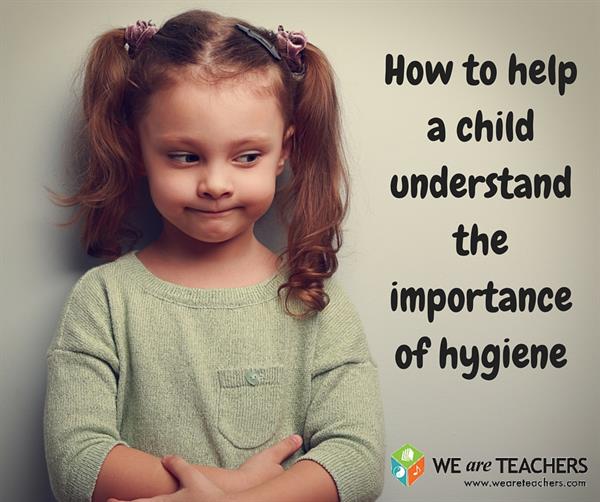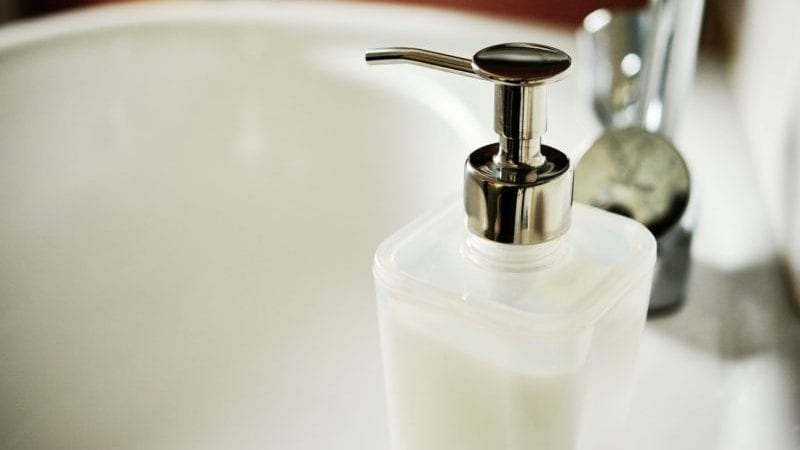As teachers, it’s not unusual to have to deal with sticky situations. Take the tough topic discussed on the WeAreTeachers HELPLINE! recently: problematic student hygiene. Teacher Jamie writes: “I have a 10-year-old fifth grader in my class that smells terrible. It’s to the point that it’s distracting learning. I’ve tried everything to help him understand the importance of bathing and brushing his teeth, but nothing is helping. Does anyone have any ideas about lessons that can be taught that might inspire a young one to want to bathe? There are others in my class that have similar issues (although none of them let it get so bad), so the lesson would apply to the group.”
Jamie, you’re not alone! Our community of teachers rallied with support and advice, and here’s what they said.
1. Provide the necessary tools.
“The only suggestion I have is to give him things like a washcloth and comb when he comes in in the morning. Let him deal with it all in school, because maybe he doesn’t have running water or time to deal in the morning.” —Karen W.
“I would provide a bar of soap, washcloth, toothbrush, toothpaste, and deodorant for him each morning.” —Christy P.
“I worked at a K-12 school in a remote village in Alaska, and this was a common issue. I always made sure to have extra hygiene products on hand for students that had issues with bathing at home. More than once, I would take the lost-and-found stuff home from my classroom (knowing full well which students the clothing belonged to), and I’d wash them. Students caught on quickly, and some would ‘accidentally’ leave their gear in my classroom several times a month.” —Chris G.
“Have baby wipes, deodorant and mouthwash handy in class for all to use.” —Veronica S.
2. Bring in other school resources.
You don’t have to deal with this issue alone! School nurses, psychologists, and physical education teachers may be able to help.
“Just a thought: It might be a sensory issue about the feel of water. I know it sounds ridiculous, but it’s a very common sensory, OCD symptom.” —Terry V.
Check with your school or district psychologist or social worker.
“We have our male physical education teachers talk with the boys.” —Misti T.
“I had a third grader like that last year. First stop in the morning was to the school nurse to take a wash off. We kept clothes at school for him, took dirty ones, washed them, and rotated them out each day.” —Lisa W.
3. Make hygiene a class routine for everyone.
“I had several kids who didn’t brush their teeth regularly, so I contacted a local dentist and asked if he would sponsor my class. He gives me a toothbrush for every student and toothpaste. I buy extra tubes of toothpaste at the dollar store. Some kids bring their own. The dentist said not to share tubes of toothpaste, because if any have poor dental hygiene, they could cross contaminate others. All kids brush their teeth after snack and before recess every day. No good-smelling breath, no recess until they comply.” —Lyn H.
“Have you considered making hygiene part of your day, so everyone brushes their teeth, washes their skin, and applies deodorant? If clean clothes are needed, I do the switch-out as needed.” —Elizabeth T.
4. Educate the whole class.
“You could find science video about microbes and bacteria that lives on your skin and in your hair and why it’s important to keep yourself clean.” —Rachael P.
“I’m thinking if you do a general health unit, perhaps he’ll get the general idea. It’s another crossover in which we have to take on this role of parenting over teaching, and I understand the the challenge of it.” —Mary H.
“There’s a germ video our school nurse showed my class. Showing something like that might help.” —Elizabeth T.
5. Depending on the severity of the situation, you may need to get the authorities involved.
“By law, you have to file a report with CPS, especially with the dental issues going on. They might not do anything, but it is documentation.” —Sarah H.


